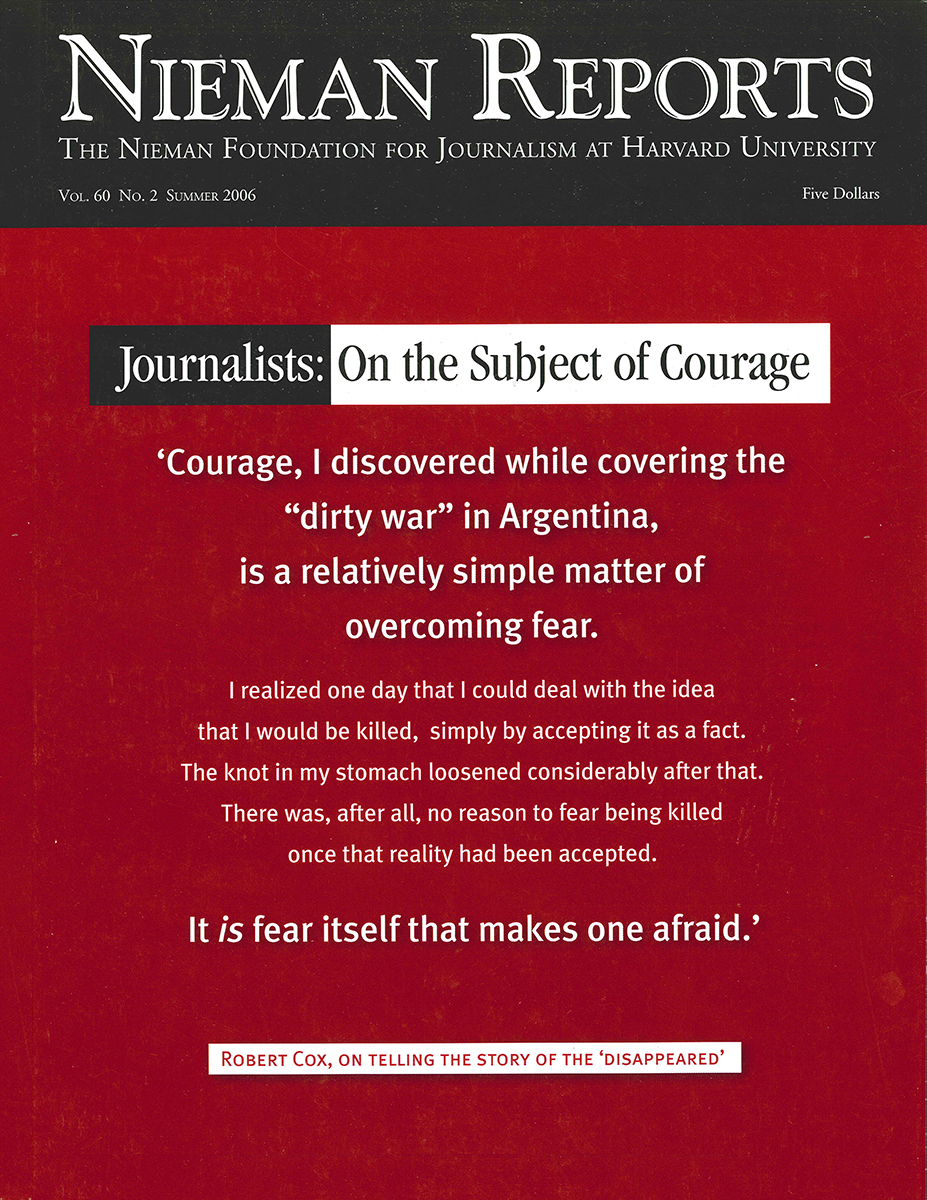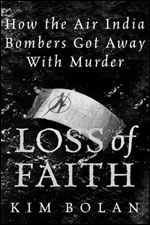When I got my first death threat in December 1997, I didn’t take it too seriously. As a reporter for The Vancouver Sun, I had been digging up new information on a group of militant Sikh separatists believed to have been responsible for the 1985 Air India bombing. I knew I had been stirring the pot and making some people feel uncomfortable, and police had warned me that I might be threatened as a tactic to get me to stop my investigations and articles.
The letter that arrived in the newsroom late in the afternoon two days before Christmas was juvenile. It incorrectly called me a man, "a bad man." It said I would be killed if I did not stop writing about a Sikh leader who was later charged in the bombing — Ripudaman Singh Malik. The handwritten single-page note also targeted a local Sikh newspaper publisher I had interviewed for a few of my stories — Tara Singh Hayer.
"You die, Hayer man," it said. "You die like Gandhi woman."
I didn’t like the message, but I didn’t realize at the time how significant and prophetic it would become in my life and my career. Instead of finishing my Christmas shopping, I waited in the newsroom for police to make what would become the first of many reports of death threats.
I remember feeling angry that someone was trying to scare me. I called several sources, including Hayer, to find out if they had been threatened. Some had. One woman had her house attacked. She ended up fleeing into the witness protection program. Hayer was already in a wheelchair after an assassination attempt from the same Sikh militants left him paralyzed in 1988.
Hayer was accustomed to receiving threats. He told me not to worry, to continue my stories because they were clearly pushing the right buttons.
Pushing Threats Aside
I did keep writing and the threats continued. Some were telephoned to the newsroom. Others were broadcast on unregulated Punjabi radio stations. A few were made to me face-to-face at events that I was covering. Eventually, a protest was organized outside my office, featuring several bombing suspects. And in July 1998, my house in Vancouver, where I live with my two sons, was targeted in a drive-by shooting.
I still felt, perhaps naively, that the objective of the threats was to stop the stories. If I kept writing, I thought, the threats would eventually stop because they weren’t working.
Several police investigations into activities of the Air India bombing suspects — activities that were independent of the acts of terrorism that left 331 passengers and crew dead — were launched as a result of my stories. Some charges, albeit less serious in nature than murder, were filed. Like any reporter who enjoys "gotcha" journalism, it was fun to see my work have an impact on a very frightening and small group of people who had gotten away with so many murders.
The Air India bombing, which was plotted and hatched in Vancouver, was the deadliest act of aviation terrorism in history prior to 9/11. The suspects weren’t hiding out in some mountain range in Afghanistan. Those responsible for this airplane bombing were living in opulent homes and running businesses here in British Columbia. They were starting charities and opening schools to teach their philosophies to children, with the assistance of millions of dollars in government grants.
After I began covering them in an unprecedented way, a window opened in the local Sikh community. Some in the community finally felt comfortable enough to go to police with information about the bombing. I learned that even Tara Hayer, the Sikh journalist, had agreed to be a government witness in the case. There was a feeling that for the first time since the June 23, 1985 bombing, charges might finally be coming.
A Reporter Is Killed
It was an exciting time to be a reporter. I felt like my work was really having an impact. I wasn’t really worried about the threats — at least until November 18, 1998. About 7 p.m. I got a call from my city desk as I sat in a movie theater with my two young sons, watching the previews.
"Tara Singh Hayer has been shot," my editor said. "He is dead."
Just like the letter I had received 11 months earlier predicted, Hayer died very much the way that former Indian prime minister Indira Gandhi had — gunned down at close range.
For the first time I felt fear. But I also felt like I had to write even more. Now I had to investigate and expose details of the plot to kill Hayer — the only journalist in Canadian history to be assassinated for his work.
The threats on my life continued; I ended up with periods during which I had bodyguards, special alarms, panic buttons, and almost ridiculous security. I moved from my home for several months. Events unfolded so rapidly that I did not have time to really reflect on what I had gotten myself into. The threats I received garnered media attention. I hated it, but also wanted to take advantage of the publicity to draw attention to the unsolved Air India case and Hayer’s murder.
Because of the coverage about my reporting, I was nominated for and then received one of the three Courage in Journalism Awards in 1999 from the International Women’s Media Foundation. I did feel a little awkward sharing the stage with an Afghani woman who had been beaten by the Taliban for her journalism, not to mention a radio station owner from Kosovo who had operated throughout the war. But I did try to use this opportunity to tell everyone I met about the injustice of the Air India bombing case and the fact that no one had ever been charged. Hayer’s murder also remained unsolved.
Finally, in October 2000, murder and conspiracy charges were brought against two British Columbia Sikh leaders — Malik, the man I’d been warned to leave alone, and Ajaib Singh Bagri, a mill worker who had made vengeful, hate-filled speeches across North America calling for thousands of murders. A third accused man later pleaded guilty to a small role in the plot.
I remember thinking that day about all the threats I had received, about Hayer dying for the story. I remember thinking that at least something good has come out of it. The 19-month criminal trial that ensued got bogged down almost immediately with admissibility arguments and legal technicalities. After so many years, it was largely a circumstantial case, albeit a compelling one. One of my original sources, the woman whose house was targeted and who fled into the witness protection program, was the so-called lynchpin in the prosecution’s case.
Families of the bombing victims were so convinced they would see convictions that they came from across Canada and throughout the world to crowd into the British Columbia Supreme Court on March 16, 2005. They left absolutely devastated when both men were acquitted.
Reflecting On My Work
In the months following the verdict, I often questioned my sanity in sticking with the story as the hostility against me increased. I had assumed for years that justice would prevail, that it just needed to be helped along journalistically. That had always motivated me as a reporter.
Many people had tried to help the truth come out in the Air India terrorism case — I had, along with other journalists, including Tara Singh Hayer, and several witnesses who were threatened and shot at and even investigators who devoted years to collecting information for the legal file.
I came to the conclusion that I could not leave the story now, in spite of the verdict — or really because of the verdict.
So I wrote a book that tries to shed light on all that went wrong. I have dug up even more since the trial ended a year ago. And I continue to receive new threats, including from two young men, whose fathers are both linked to the bombing suspects. They muscled me in a courthouse corridor in March and said I would get what is coming to me.
I don’t think of myself as courageous or brave. I get annoyed and embarrassed when I am described that way. "No," I argue. "I am really just stubborn and obsessive."
I don’t face imprisonment or state-sanctioned execution for what I write like many journalists around the world do. I don’t like having police cameras peering out from my front door. I feel silly having bulletproof film covering my home’s windows. But I do feel a sense of duty to my profession and to the people I cover. If I back down now, after all these years, the act of threatening will have become a successful tactic. More Canadian journalists will get letters like the one I got almost eight years ago. And my old colleague, Tara Singh Hayer, will have died in vain.
Kim Bolan is a senior investigative reporter with The Vancouver Sun. Awards for her work include a National Newspaper Award and the National Press Club of Canada’s Press Freedom Award. Her book, "Loss of Faith: How the Air India Bombers Got Away With Murder," was published last fall by McClelland & Stewart.



